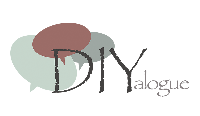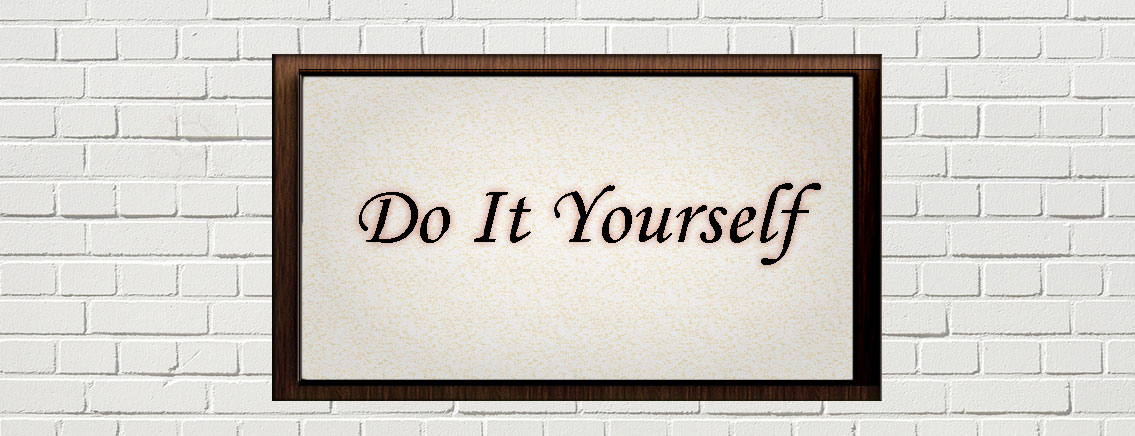One of the easiest ways to make a dramatic change in a room is to add a backsplash. In this article we detail how to use a backsplash in a bath remodel.
One of the biggest advantages to choosing Fasade or Aspect backsplash products for a bath remodel is that the project often takes less than one day. Fasade 18′ x 24′ decorative backsplash panels can be installed with double-sided tape or construction adhesive. Made of decorative vinyl, their flexibility and size make them easy to handle and install. They’re also available in 4’x8′ wall panels, which is great for accent walls or larger areas. Fasade panels are an affordable alternative to traditional grout-applied tile projects. They are available in a number of traditional and contemporary styles and colors.
Aspect tiles are another great product to consider. They just peel and stick for instant style.There is no need to worry about the mess of grout or the hassle and expense of hiring a tile installer, and they are available in metal, glass and stone.
Aspect metal tiles are offered in 3’x6′ subway style and matted formats in stainless, champagne, copper and bronze finishes. Glass tiles are also offered in subway and matted styles in a variety of colors. Aspect stone tiles are made of real stone, but are easy to cut with tin snips or a utility knife. They are offered in nine colors to match any decor.
For creative inspiration on how to use backsplash in a bath remodel, visit our photo galleries.
Do you want to update your kitchen without spending a lot of time and money? If that sounds appealing, a DIY kitchen backsplash is just the project.
Installing a Fasade decorative vinyl backsplash is one of the easiest DIY kitchen backsplash projects. Measuring 18” x 24” each, these decorative backsplash panels are available in a range of styles and finishes to match any decor. Lightweight and flexible, they install with double-sided tape or tube adhesive, eliminating the hassle of grout.
To install Fasade backsplash, first prepare the area to be covered so that it is clean, dry, flat, smooth and free from dust, grease, etc. You may choose to paint the wall where the edge of panel meets cabinetry, or install edge J-trim to avoid any gaps that show through. Do a dry layout first to determine where your panels will go. You can use a pair of scissors or tin snips to cut the panels to the necessary size.
Determine if you are going to install the panel using double-sided tape or tube adhesive. Regardless of which method you use, you will want to clean the backside of the panels using a paper towel or cloth and isopropyl alcohol. If using trim, slide the trim piece onto the edge of the panel. Apply glue or adhesive strips to the back and press the panel firmly into place when alignment is correct and squeeze out excess air. Finish installing the rest of the panels in the same fashion.
Note: Prior to installation, it is important to understand the overlap feature of each panel. Each panel has two 1/2″ flat edges (the longer flat edge is the top of the panel and shorter flat edge is the right side of the panel). Arrange all panels this way so additional panels can be added to the top or right side of any panel. When overlapping 4 panels, it is necessary to cut a 1/2″ notch in panels 2 and 3 to avoid an overlap buildup that causes a “bump.”
For ideas on how to use Fasade decorative backsplash panels, visit our galleries page.
Thinking of completing a DIY kitchen backsplash project? Let us know what you think in the comments!
We recently discovered another enterprising blogger/mom/DIY enthusiast via a post titled “How to Cover an Ugly Kitchen Backsplash.”
The author, Jennifer Griffin of Edmonton, Okla., writes on her blog “Dimples & Tangles” that she never liked the backsplash in her kitchen which consisted of white tiles with red and green stripes. “Perfect in the mid-90’s when the house was built. Today, not so much,” she writes.
When they first moved into their home they undertook a kitchen redo that consisted mainly of cosmetics fixes, knowing someday they’d make major renovations. One such fix was the backsplash, where they used Fasade backplash in Traditional 1 style, Bermuda Bronze finish. You can use construction adhesive or double-sided tape during installation, which is what they did for this temporary fix.
For their more extensive kitchen remodel, Jennifer says they wanted to use the same Fasade panel style but in a different color. This time she painted them to coordinate better with the cabinetry and countertops. She also used them as an accent in the counter/bar area, noting, “These panels are flexible, so all I had to do was follow the wall around and glue it down. It conformed to the shape of the wall.”
A Great Solution
Jennifer says they may change out the backsplash again. “If we go a different route in the future, this will be so quick to pull down and be ready to re-do,” she says. “I’m thinking maybe beveled subway tile? But, we’re good for now and these panels have been a great solution for our backsplash. My sister used the copper color in her kitchen and it looks fantastic. I’ve also seen these used on a ceiling…amazing!”
We think the finished product looks beautiful! Be sure to check out the post for more details and photos and let us know what you think in the comments!
Fasade backsplash, wall panels and ceiling tiles can be purchased at any Home Depot, Lowe’s or Menards stores. There are also many more styles and finishes available online at DIYdecorStore.com.

